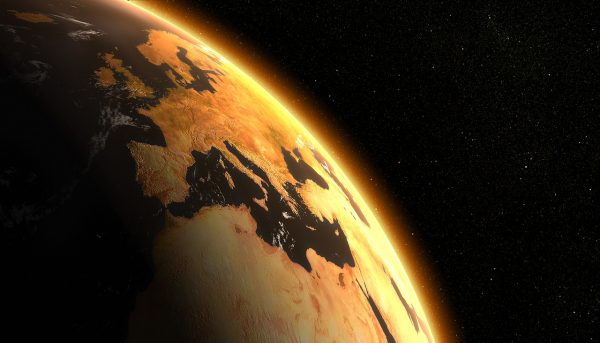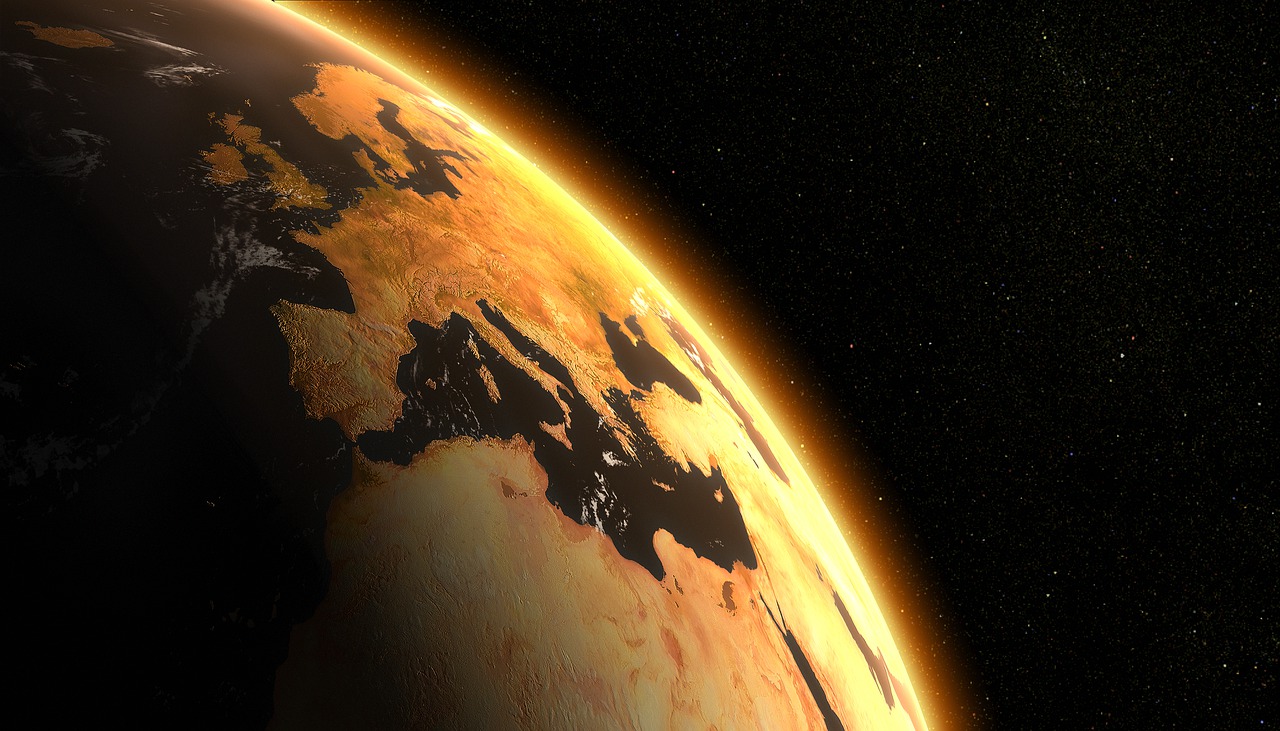 Did you know that Brazil just had snow for the first time in 64 years? Millions of Brazilians were absolutely thrilled to experience real snow for the very first time in their lives, but the freakishly low temperatures have hit agricultural production really hard at a very sensitive moment. Brazil is one of the largest exporters of corn in the entire world, and at this point corn production is expected to be way below original projections. But for many Americans, the fate of the Arabica bean crop is of far more interest. Higher coffee prices would affect millions upon millions of Americans on a daily basis, and that is why so many people are freaking out about the fact that coffee prices are really starting to spike…
Did you know that Brazil just had snow for the first time in 64 years? Millions of Brazilians were absolutely thrilled to experience real snow for the very first time in their lives, but the freakishly low temperatures have hit agricultural production really hard at a very sensitive moment. Brazil is one of the largest exporters of corn in the entire world, and at this point corn production is expected to be way below original projections. But for many Americans, the fate of the Arabica bean crop is of far more interest. Higher coffee prices would affect millions upon millions of Americans on a daily basis, and that is why so many people are freaking out about the fact that coffee prices are really starting to spike…
Arabica coffee prices touched a nearly seven-year high earlier this week as the unusual cold weather affected the crop in Brazil, the world’s top producer, with companies poised to pass on higher costs to consumers.
Unfortunately, prices are likely to go even higher in the days ahead.
The recent cold snap hit a very wide area, and one coffee exporter is warning that “no one really knows the depth of damage undertaken”…
Preliminary estimates from the Brazilian government indicated last week’s frosts alone had affected 150,000 to 200,000 hectares (370,000-490,000 acres), about 11% of the country’s total arabica crop area.
“No one really knows the depth of damage undertaken,” said coffee exporter Comexim, which estimated a 13% loss on next year’s production at the Cerrado region in top coffee growing state Minas Gerais.
The full extent of the damage to Brazil’s corn fields is yet to be determined as well. Currently, it is being projected that total corn production could be down about 17 percent compared to last year…
Total corn production in Brazil is now seen at 85.3 million tonnes, almost 17% below last year’s level, AgRural said citing weather issues affecting the crop, particularly the second corn crop which was first hit by drought and later by frosts in states like Mato Grosso do Sul and Paraná.
Over in Africa, endless drought is taking a very heavy toll in many areas.
At this point, we are being told that “crop failure” has led to “mass hunger” in Madagascar, and we are being warned that “tens of thousands are on the brink of starvation”…
The island nation of Madagascar in the Indian Ocean continues to suffer from its worst drought in four decades.
The lack of rain in southern Madagascar has led to crop failure and mass hunger, all said to be driven by climate change. The UN’s World Food Program says that more than a million people don’t have enough food, and tens of thousands are on the brink of starvation.
Thankfully, we aren’t facing starvation here in the United States right now, but there are reports of “complete crop failures” in certain areas. For example, just check out this example from Washington state…
“We have had complete crop failures in Benton and Yakima counties,” said Michelle Hennings, executive director of the Washington Association of Wheat Growers.
Hennings said local yields likely won’t be as disastrous, and they will vary from farm to farm depending on if they have received small pockets of rain here and there.
But the overall reality is that wheat production will likely be down across the board in the Inland Northwest.
Conditions have been so dry for so long in some parts of the western half of the country that some communities are actually starting to run out of water.
This is particularly true in northern California…
In Fort Bragg on the Mendocino Coast, city leaders are rushing to install an emergency desalination system. In Healdsburg, lawn watering is banned with fines of up to $1,000. In Hornbrook, a small town in Siskiyou County, faucets have gone completely dry, and the chairman of the water district is driving 15 miles each way to take showers and wash clothes.
We have never seen anything quite like this before.
At this point, authorities in California are warning that there are at least 81 water systems that are facing “critical water supply issues”…
As the state struggles with its worst drought since at least 1977, no one has a complete list of which of the state’s 7,500 public water systems are facing the most severe shortages.
But in May, officials at the State Water Resources Control Board in Sacramento set out to create one. They called it: “Public water systems likely to have critical water supply issues by the end of August.” It currently includes 81 water systems that serve 132,559 people — from tiny Mammoth Pool Mobile Home Park in the Sierra foothills near Yosemite National Park, to well-known Northern California towns like Ukiah, Lakeport, Bolinas, Healdsburg, Cloverdale and Fort Bragg.
In northern Mexico, the lack of water is even more serious.
The endless drought has resulted in a severe lack of vegetation for cattle to eat, and many of them are literally dropping dead…
In the parched hills of southern Sonora, Marco Antonio Gutierrez paced around a clearing, counting the dead.
There were seven rotting carcasses — jutting ribs and shriveled hides — and two sun-bleached skulls. Nine cows, felled by heat and hunger.
We have seen this sort of thing happen in the poorest parts of Africa, but it isn’t supposed to happen in North America.
As a result of this endless “megadrought”, the number of cattle being raised in Sonora has now fallen by almost half…
Two years of extreme drought have turned large stretches of northern Mexico into a boneyard. Between starvation and ranchers forced to prematurely sell or slaughter their livestock, officials say the number of cattle in Sonora has dropped from 1.1 million to about 635,000.
It’s an unimaginable loss for a state that is world-famous for its high-quality cows, and where beef is not just a central part of the diet and economy but also a tradition that binds families together.
I could share countless more examples of how the crazy weather is affecting food production around the world, but I don’t want to make this article too long.
The bottom line is that food production all over the planet is going to be much lower than anticipated, and that has very serious implications for the upcoming year.
Before I end this article, there is one more news item that I would like to share…
“It’s happening,” scientist Scott Hotaling told a reporter for OPB as he gestured across Paradise Glacier high up on Mount Rainier in Washington.
He was referencing hundreds of thousands of tiny, black worms emerging from a vast expanse of white snow.
I have been watching Mount Rainier for a long time, and so this definitely got my attention.
Are hundreds of thousands of black worms emerging from the ice of Mount Rainier because of the unprecedented heat this summer, or is something else going on?
I don’t have the answer to that question yet, and I will continue to monitor developments on Mount Rainier very carefully.
Our planet is changing in highly unusual ways, and despite all of our advanced technology we are still very vulnerable to extreme weather fluctuations.
Hopefully conditions will revert to normal soon, because if that doesn’t happen global food supplies are just going to get tighter and tighter in the months ahead.
***It is finally here! Michael’s new book entitled “7 Year Apocalypse” is now available in paperback and for the Kindle on Amazon.***
About the Author: My name is Michael Snyder and my brand new book entitled “7 Year Apocalypse” is now available on Amazon.com. In addition to my new book I have written five others that are available on Amazon.com including “Lost Prophecies Of The Future Of America”, “The Beginning Of The End”, “Get Prepared Now”, and “Living A Life That Really Matters”. (#CommissionsEarned) By purchasing the books you help to support the work that my wife and I are doing, and by giving it to others you help to multiply the impact that we are having on people all over the globe. I have published thousands of articles on The Economic Collapse Blog, End Of The American Dream and The Most Important News, and the articles that I publish on those sites are republished on dozens of other prominent websites all over the globe. I always freely and happily allow others to republish my articles on their own websites, but I also ask that they include this “About the Author” section with each article. The material contained in this article is for general information purposes only, and readers should consult licensed professionals before making any legal, business, financial or health decisions. I encourage you to follow me on social media on Facebook and Twitter, and any way that you can share these articles with others is a great help. During these very challenging times, people will need hope more than ever before, and it is our goal to share the gospel of Jesus Christ with as many people as we possibly can.

